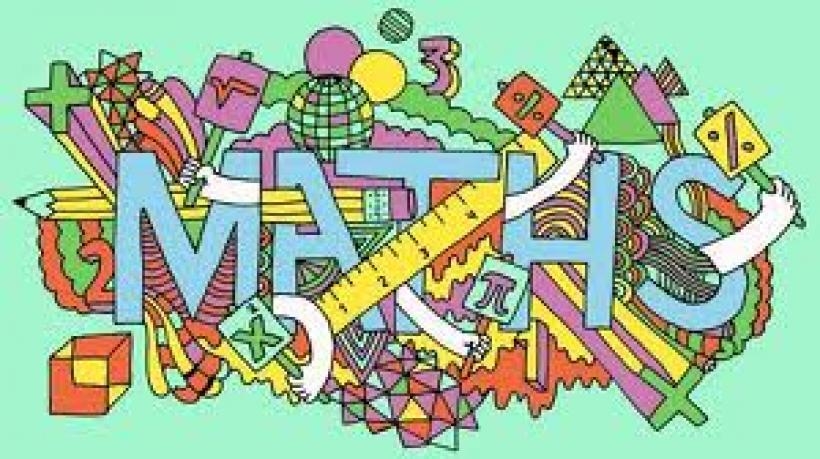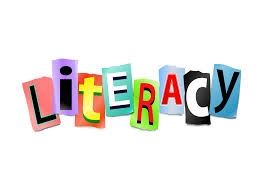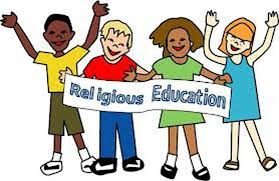

Bernadette Soubirous was born in Lourdes, France to Francois and Louise Casterot who were very poor. She was the oldest of six children but was frail and often sick. On Thursday, February 11, 1859, around the time of her First Communion, Bernadette was sent with her younger sister and a friend to gather firewood. And this is the story she had to tell, which was taken from a letter she wrote:
"I had gone down one day with two other girls to the bank of the river Gave when suddenly I heard a kind of rustling sound. I turned my head toward the field by the side of the river, but the trees seemed quite still and the noise was evidently not from them. Then I looked up and caught sight of the cave where I saw a lady wearing a lovely white dress with a bright belt. On top of each of her feet was a pale yellow rose, the same colour as her rosary beads. At this I rubbed my eyes, thinking I was seeing things, and I put my hands into the fold of my dress where my rosary was. I wanted to make the sign of the cross, but for the life of me I couldn't manage it, and my hand just fell down. Then the lady made the sign of the cross herself, and at the second attempt I managed to do the same, though my hands were trembling. Then I began to say the rosary while the lady let her beads clip through her fingers, without moving her lips. When I stopped saying the Hail Mary, she immediately vanished."
The beautiful lady who appeared to Bernadette above a rosebush in the grotto of Massabielle was God's Mother, the Blessed Virgin Mary. She appeared to Bernadette eighteen times and spoke with her. She told Bernadette that she should pray for sinners and do penance. The Lady also told her to have a chapel built there in her honor. Many people did not believe Bernadette when she spoke of her vision. She had to suffer very much. But one day Our Lady told Bernadette to dig in the mud. As she did, a spring of water began to flow. The next day it continued to grow larger and larger. Many miracles happened when people began to use this water. When Bernadette was older, she became a sister. She was always very humble and did not want to be praised. She did not want to receive special treatment just because she had actually seen the Blessed Virgin. Although her own health was poor, she helped care for the sick and elderly sisters. She died in 1879 at the age of thirty-six. Her last words were: "Holy Mary, pray for me, a poor sinner."
THINKING SKILLS
We continue to use De Bono’s Thinking Hats, Habits of Mind and a variety of Thinking Maps to develop the children’s thinking skills. Regular reference is made during lessons to Edward De Bono’s Thinking Hats, Habits of Mind and Thinking Maps. Ask your child to tell you about which one/s they have used in class today!

We have discussed the rules that we feel will help the children to learn and work in a happy and positive environment. The children have also discussed the importance of having rules and how they can keep us all safe. Additionally, the rules reflect the ethos and mission statement of St. Mary’s school. These are displayed in our classroom. The school’s rewards and sanctions for good and bad behaviour have also been discussed with the children and displayed in the classroom.

Spellings, X Tables, Literacy, Numeracy, Mental Maths and Handwriting homework will be given every Wednesday to be handed in on Monday of the next week. Your child can hand in their homework earlier if they wish. The purpose of the homework is to reinforce learning that has taken place in class. It is also an opportunity for you to see what your child is learning. Each week the work will be explained and we will discuss any questions that they may have. The weekly spelling test will take place during the week to allow your child to practise the spelling pattern that they have focused on in lessons. Please ensure your child has practised and learnt their spellings during the week. Other homework may also be given relating to either RE, Science or history if required.
Now that the children are moving into KS2, a greater emphasis will be placed on being more independent and responsible. Your child’s homework is therefore an opportunity for them to take responsibility themselves; ensuring homework is always completed and handed in on time.
READING
At present your child will still be bringing home a school reading book. Please ensure that your child reads every night in order to develop fluency. Reading records are provided for date, book and comments to be added by an adult. Please ensure that the reading records are signed each time your child is listened to read. Also, if you could spend a little time talking about the text and asking questions to encourage your child to really think about what they have read. This will greatly help their comprehension skills. Evidence shows that good readers are also good spellers and good writers. Reading records will be checked by the class teachers every Monday and we will expect to see five adult signatures showing that you have heard your child read.

Topics to be covered this term:
-
Place Value
-
Addition and Subtraction
-
Multiplication and Division
In addition: daily multiplication tables practice and weekly mental maths test


Following the New Curriculum
This term, the children will be covering recount writing (diary entries and newspaper reports), character description, and setting of stories, letter writing and information texts.
In addition: weekly spellings tests, guided reading, creative writing, grammar work and handwriting practice.


Plants:
In this unit, children will learn to:
-
Identify and describe the functions of different plants and flowering plants, roots, stems/trunk, leaves and flowers.
-
Explore the requirements of plants for life and growth (air, light, water, nutrients from soil and room to grow) and how they vary from plant to plant.
-
Investigate the way in which water is transported within plants.
-
Explore the part that flowers play in the life cycle of flowering plants, including pollination, seed formation and seed dispersal.
Working Scientifically:
-
Ask relevant questions; use different types of scientific enquiries to answer them.
-
Set up simple practical enquiries, comparative and fair tests.
-
Identify differences, similarities or changes related to simple scientific ideas and processes.
-
Make systematic and careful observations and, where appropriate, take accurate measurements using standard units; use a range of equipment, including thermometers and data loggers.
-
Record findings use simple scientific language, drawings, labelled diagrams, keys, bar charts and tables.
-
Report on findings from enquiries, including oral and written explanations, displays or presentation of results and conclusions


History-The Egyptians:
In this topic children will learn about modern day Egypt. They will learn about the geography of Egypt and compare it to Ancient Egypt using atlases
Children will conduct independent research to find information about how the Egyptians lived their lives. They will learn about Egyptian beliefs and religious practices and find out about the ceremonies which took place when an Egyptian died.

Linking Dance Actions
In this unit, children explore basic body actions e.g. jumping, shapes, travel and use different parts of their body to make movements. They create and repeat short dances inspired by themes.
Football
The children will be learning the rules of the game including how to play as a team.
Athletics
The children will be learning how to use stamina and agility as well as different athletic activities. They will be using these skills in different areas of athletics.

The children will be extending their vocabulary this term, enabling them to talk particularly about: members of the family, parts of the body; the weather; vocabulary connected with school work and the curriculum.

Creation and Covenant
In this unit, children will be exploring the different ways that cultures throughout history describe how the world was created. The children will explore creation through the scripture using Genesis 1 and will begin to link this to the covenant that God has made.
Prophecy and Promise
In this unit, the children will:
-
Explain some reasons why Catholics celebrate Mass.
-
Explain some signs, actions and prayers used during Mass.
-
Describe their own experiences of being part of the Liturgy of the Word.
-
Explain how Mary and Joseph showed the trust they had in God.
-
Compare the signs used at Advent and Christmas and explain what they mean to Christians.


Egyptian Art:
In this unit, the children will explore the artwork from the Egyptian era. They will use different media such as: paint, water colours and clay to create pieces of art inspired by Egyptian art. This unit links to the History unit of The Egyptians so the children will have a good background understanding of the artist’s inspiration.
Abstract Art:
The children will explore how different artists have expressed themselves using different techniques such as action/ motion painting. The children will research some abstract artists and try to use the style of Jackson Pollock in their own piece.

Textiles- Egyptian collars:
Children will learn to:
-
Demonstrate their ability to use cross-stitch as a decorative feature or to join two pieces of fabric together.
-
Develop appliqué designs based on design criteria.
-
Design, cut and shape their template for an usekh/wesekh collar, with increasing accuracy.
-
Decorate their Egyptian collar using a variety of techniques such as appliqué, cross-stitch, beads, buttons and pinking.
-
Measure and attach a ribbon with a running stitch.
-
Recognise different types and qualities of fabrics.
-
Explain the aesthetic and/or functional properties of some of their material choices.
Mechanical Structures – Pneumatic Toys
Children will learn to:
-
Draw accurate diagrams with correct labels, arrows and explanations.
-
Correctly identify definitions for key terms.
-
Identify five appropriate design criteria.
-
Communicate two ideas using thumbnail sketches.
-
Communicate and develop one idea using an exploded diagram.
-
Select appropriate equipment and materials to build a working pneumatic system.
-
Assemble their pneumatic system within the housing to create the desired motion.
-
Create a finished pneumatic toy that fulfils the design brief.

PSHE/ CITIZENSHIP & RSE EDUCATION:
Information from the Ten Ten Resources:
LKS2 Module One: Created and Loved by God explores the individual. Rooted in the teaching that we are made in the image and likeness of God, it helps children to develop an understanding of the importance of valuing themselves as the basis for personal relationships:
Unit 1 – Religious Understanding picks up the story of Kester which began in Key Stage One. Through story and discussion, children will learn that they are designed for a purpose and how they should live in light of this. A second session unpacks the Sacraments of Baptism and Reconciliation as a foretaste of heaven and a wonderful part of our relationship with God.
In Unit 2 – Me, My Body, My Health, children meet animated character, AJ, who will reappear throughout this scheme of work. In this unit, children will learn to celebrate similarities and differences, and to appreciate and look after their bodies as gifts from God. Teaching also covers specific physical and emotional changes during puberty, and that growing from boys and girls to men and women is part of God’s loving plan for creation.
Unit 3 – Emotional Well-Being helps children to understand the difference between feelings and actions, how to manage them and what they can do to help themselves stay emotionally healthy. In this unit, media is discussed as a ‘fake reality’ and God’s love for us is presented as a better basis for our self-confidence. Finally, children will identify unacceptable behaviours and learn to build resilience against negative feelings by practising thankfulness.
Returning to an allegorical story from Kester’s Adventures which establishes that we were handmade by God with our parents help, Unit 4 – Life Cycles explores the miraculous nature of human conception and birth and offers an opportunity for thanksgiving.

MUSIC:
This term we will be focusing on different areas of music including:
-understanding rhythm
-creating pace
-performance of solo and group pieces.
We look forward to working in partnership with you and your child this year. Please do not hesitate to contact us if you wish to discuss anything.
Thank you in advance for your support,
Mrs Falzone